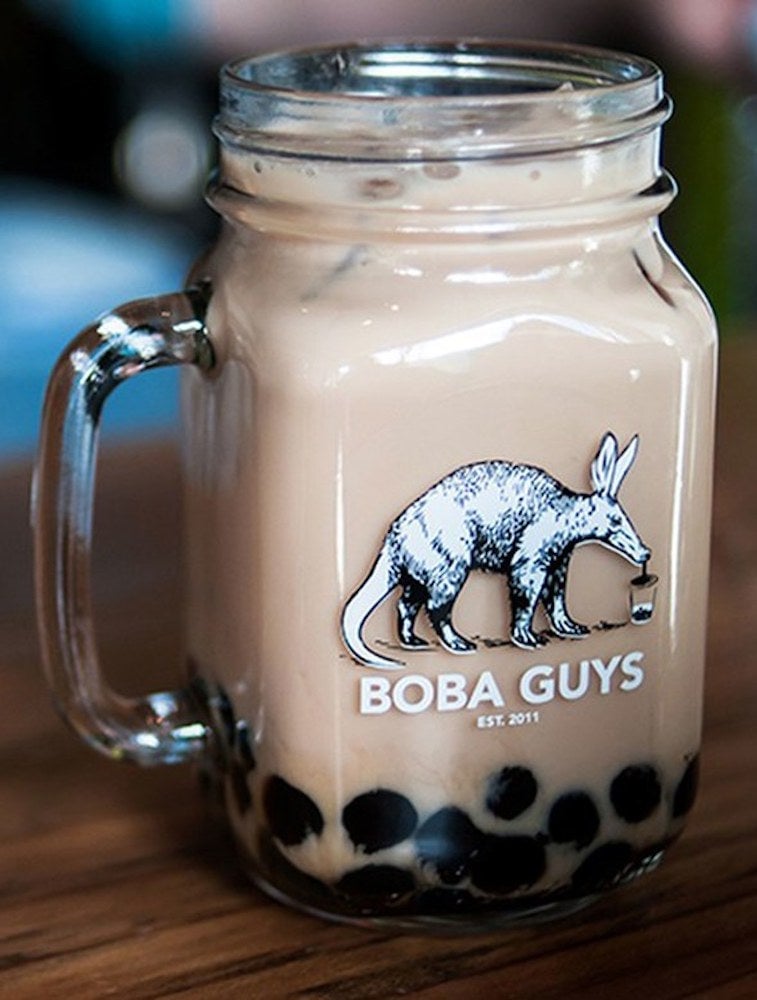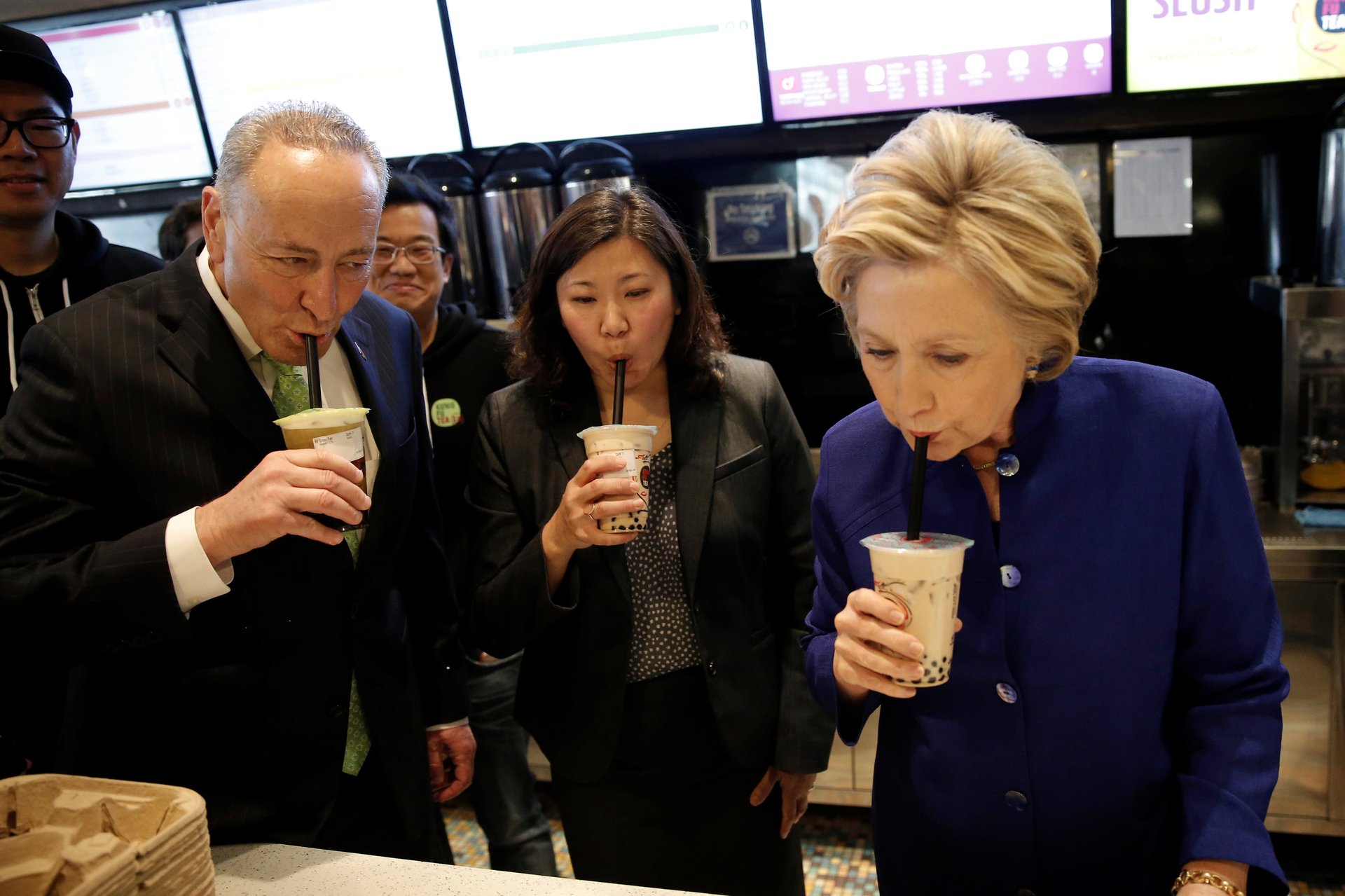“Cheese tea” is the next bubble tea, thanks to teenagers and Instagram
Just yesterday, the Washington Post made a pronouncement: a beverage called “cheese tea,” originated from Taiwan, is the “latest wait-in-line, Instagram-your-purchase status food.” Cheese tea sounds gross, but it’s not melted brie with Lipton. It’s a sweet tea topped with a foamy, mousse-like dairy product that is usually cream cheese blended with condensed milk. It’s delicious—and I know that because, in 2016, my teenage sister took me to Cupertino’s Happy Lemon, a pioneer chain brand of the cheese tea since 2006. Asian American teenagers in Silicon Valley are actually the country’s foremost experts on the latest Instagrammable drinks.


Just yesterday, the Washington Post made a pronouncement: a beverage called “cheese tea,” originated from Taiwan, is the “latest wait-in-line, Instagram-your-purchase status food.” Cheese tea sounds gross, but it’s not melted brie with Lipton. It’s a sweet tea topped with a foamy, mousse-like dairy product that is usually cream cheese blended with condensed milk. It’s delicious—and I know that because, in 2016, my teenage sister took me to Cupertino’s Happy Lemon, a pioneer chain brand of the cheese tea since 2006. Asian American teenagers in Silicon Valley are actually the country’s foremost experts on the latest Instagrammable drinks.
In August, the New York Times wrote a similar article about the popularity of “bubble” or “boba” tea, a Taiwanese beverage so ubiquitous that even on the Upper East Side of Manhattan, New York, where I live, there are four bubble teashops within 10 minutes walking distance. The drink usually

consists of a tea or juice base in which chewy tapioca balls, jellies, aloe vera, and even puddings get added to the mix. Like the cheese tea, it can be prepared hot or cold. It’s so thick that you have to use specialized fat straws to drink it. The internet was enraged at the article. First, it insinuated that the drink was a recent discovery when it had been common in communities where Asian Americans lived for over a decade. Second, it described bubble tea as “exotic” and “strange,” assuming the reader was white and came from a non-diverse community, when any Asian American reader—and plenty of their non-Asian friends—would have grown up with the drink.
The New York Times was right about one thing, though—as competition for bubble tea shops increases, the quality of these sugary drinks get better, too. As a teenager growing up in Silicon Valley a decade ago, my main source of bubble tea was a Taiwanese American chain called Tapioca Express, which sat in strip malls down the Bay Area. It still exists, but once, when I asked my sister if she wanted me to grab some “Tap Ex” bubble tea on my way home, she flatly refused.
“That’s not the good stuff,” she said. I was confused. It’s just sugar water with little balls of starch. It turns out, shortly after I moved out of the Bay Area in 2009, bubble tea went artisanal. Bubble tea shops like San Francisco-based Boba Guys (which launched in 2011 and was finally featured in Vogue in 2017), Gong Cha, and Teaspoon (one of my sister’s after-school go-tos) use fresh ingredients, trendy non-dairy milks, organic fruits, and heirloom teas. You can get dark-roasted oolong tea with organic cream, or an almond milk matcha latte with tapioca pearls. The run-of-the-mill bubble tea I grew up with were made with artificial flavors, cloying syrups, and powdered milks. And they just don’t cut it anymore.
Recently, while visiting home, I had a craving for Teaspoon’s Grasshopper drink, a lychee green tea topped with fresh cucumber juice. I invited my sister, who was still in her pajamas with unbrushed teeth, to join me. “No,” she replied again. “Why turn me down this time?” I asked. I had suggested a respectable brand, after all. “Because everyone I know from school will be there,” she explained. “They can’t see me like this.” If you want to know what you’ll be drinking—and Instagramming—next year, just ask a Silicon Valley teen what they’re doing after class.